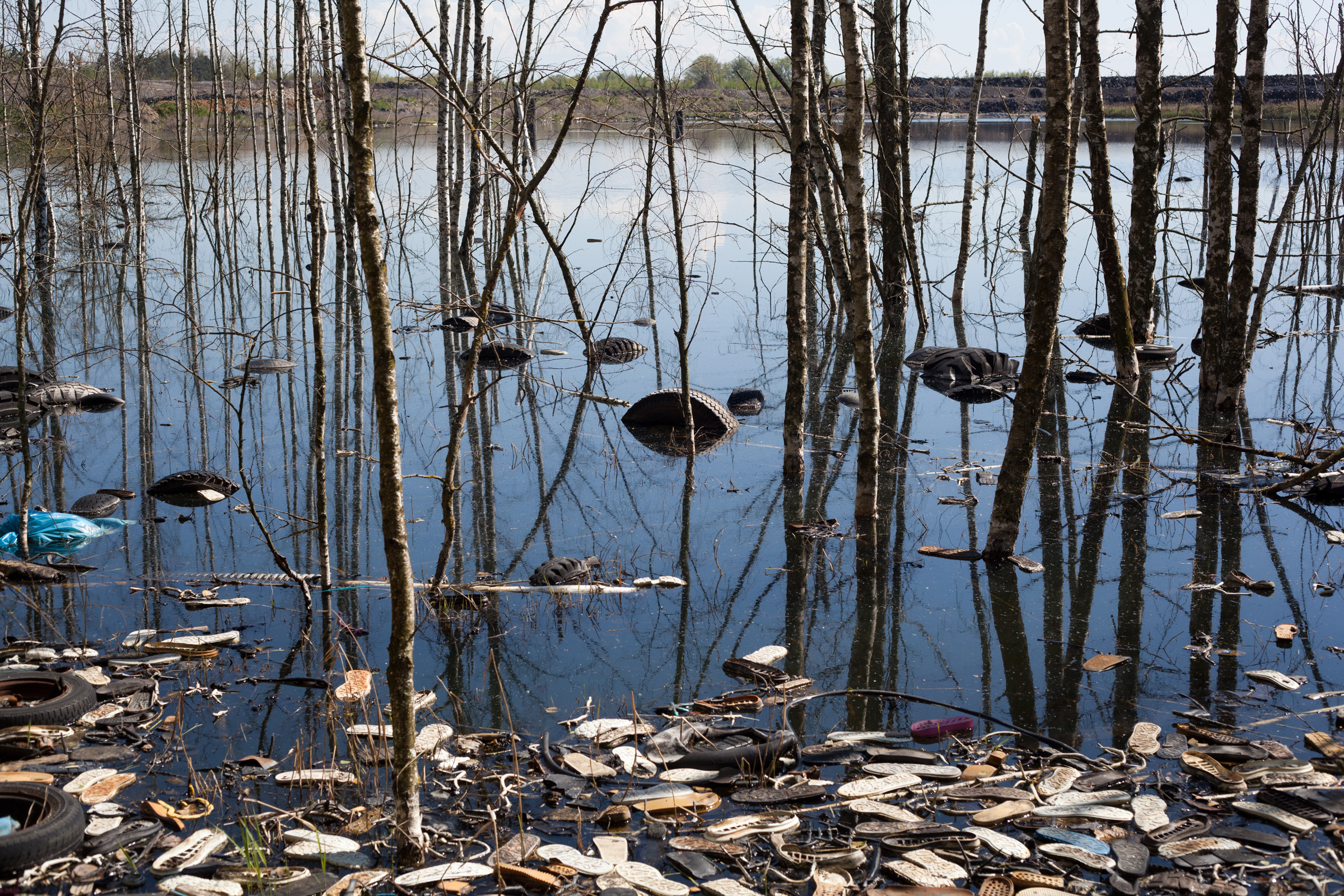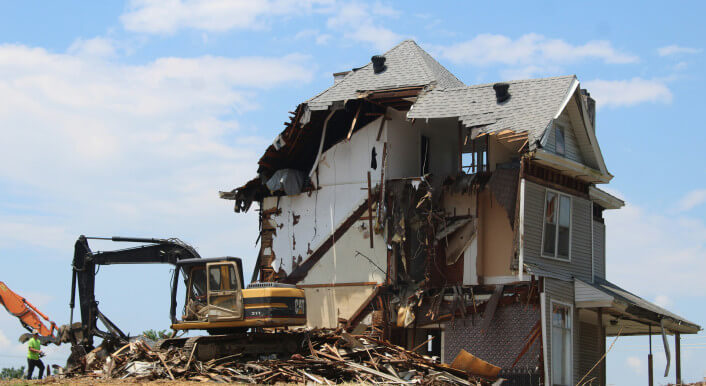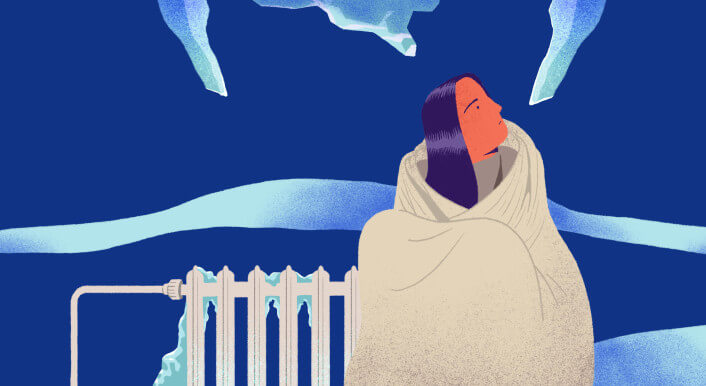There is a saying in the waste industry: rubbish always finds its way to the cheapest hole. One such hole can be found at the centre of Europe, on the outskirts of the Czech village Mydlovary. The hole emits a foul stench. Dead birch trees poke out of the water. Car tyres float on the water’s surface, as do shoe soles bearing the logos of various luxury brands and the legend ‘Made in Italy’. On the shore, a mountainous landscape of grey and black accumulates – even more tyres and masses of other rubber waste.
Disposing of such waste in landfills has long been prohibited in most countries of the European Union. However, an exclusive investigation by CORRECTIV.Europe reveals that waste disposal companies from Germany, Austria and Italy continue to export old tyres and other waste – in some cases toxic – to the Czech Republic. The authorities tolerate this questionable trade, however, since the waste is used to cover up an even greater problem.
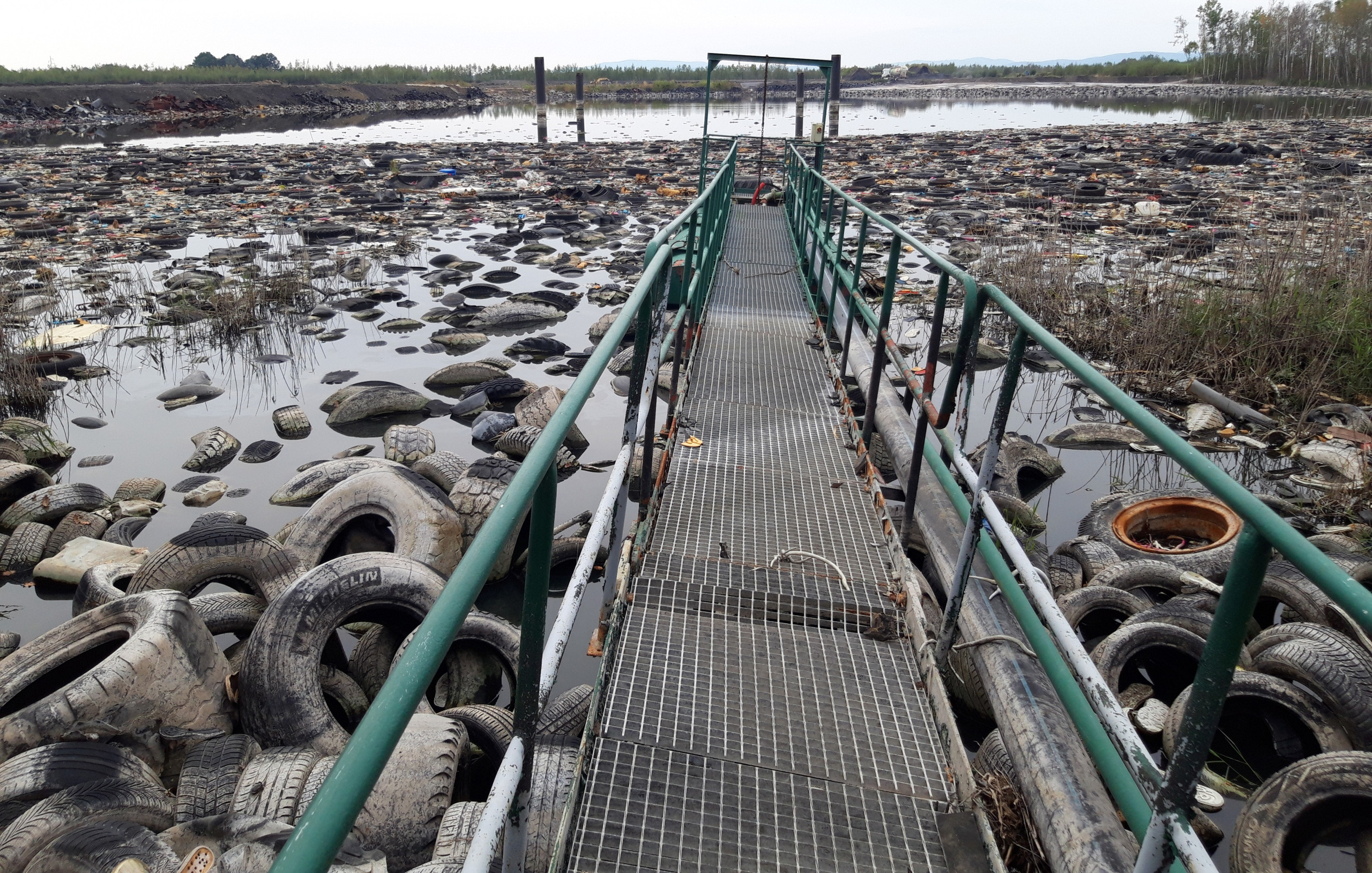
Over the past two decades, millions of tonnes of waste have been dumped in Mydlovary – including significant volumes from neighbouring Germany, a country championed for its waste separation and recycling systems. According to the managing director of one German waste disposal company, Mydlovary is ‘the biggest hole in Europe’ for rubbish dumping. Another waste dealer, who also spoke with CORRECTIV.Europe under the condition of anonymity, had this to say: ‘To me, Mydlovary is just a hole where all kinds of crap get dumped.’ He says the disposal of German waste in Mydlovary is an ‘open secret’ in the industry: ‘Everyone has delivered there, dozens of companies.’
Dumping waste in Mydlovary is simply much cheaper than recycling it properly in Germany. Several sources confirmed this assumption to our reporters. One entrepreneur speaks of savings of up to 80 per cent compared to disposal in Germany. Several German waste disposal companies contacted by CORRECTIV.Europe admit to having made deliveries in the past, stating they have since stopped such exports. However, our investigation reveals that the business is still going on.
‘It’s a ticking time bomb’
At the site in Mydlovary, we discovered piles of waste presumably of German origin, including material bearing the logo of a major German tyre manufacturer. We also investigated suspicious waste transports on an online freight exchange platform. Transport companies use this website to arrange shipments. They enter where the freight is to be picked up and unloaded. Between October and December 2024 alone, we documented 119 listed waste transports from across Germany. At the same time, dozens of waste transports were also listed from various locations in Austria and Italy. Their destination: Mydlovary, or one of the other villages on the edge of the contaminated holes. Their cargo, according to the freight exchange, included ‘shredded tyres’, ‘rubber waste’ or simply ‘loose waste’. When confronted with these findings, some companies avoided giving clear answers; instead, one subcontractor referred to the next.
In 2018, about a quarter of all municipal waste generated in the European Union was landfilled – a practice the EU wants to drastically reduce within the coming years, as landfills threaten the groundwater and release significant amounts of methane, a notorious greenhouse gas. In Germany, the disposal of most types of waste in landfills has already been prohibited since 2005. All waste in Germany should instead be recycled or otherwise reutilised. Used tyres, for example, must be shredded and recycled or incinerated for energy production. A case like Mydlovary is not compatible with this recycling plan. German authorities have expressed serious concerns about waste deliveries to Mydlovary for years. During a meeting in 2016, German federal and state officials agreed that such exports to Mydlovary were ‘incompatible with the European waste hierarchy and the goal of harmless and high-quality recycling’.
How is it possible, then, that waste transports continue to roll across the border to Mydlovary almost every day? The truth is that the Czech state also has an interest in waste from abroad. Waste, after all, can be used to fill holes – and the holes on the outskirts of Mydlovary are particularly perilous.
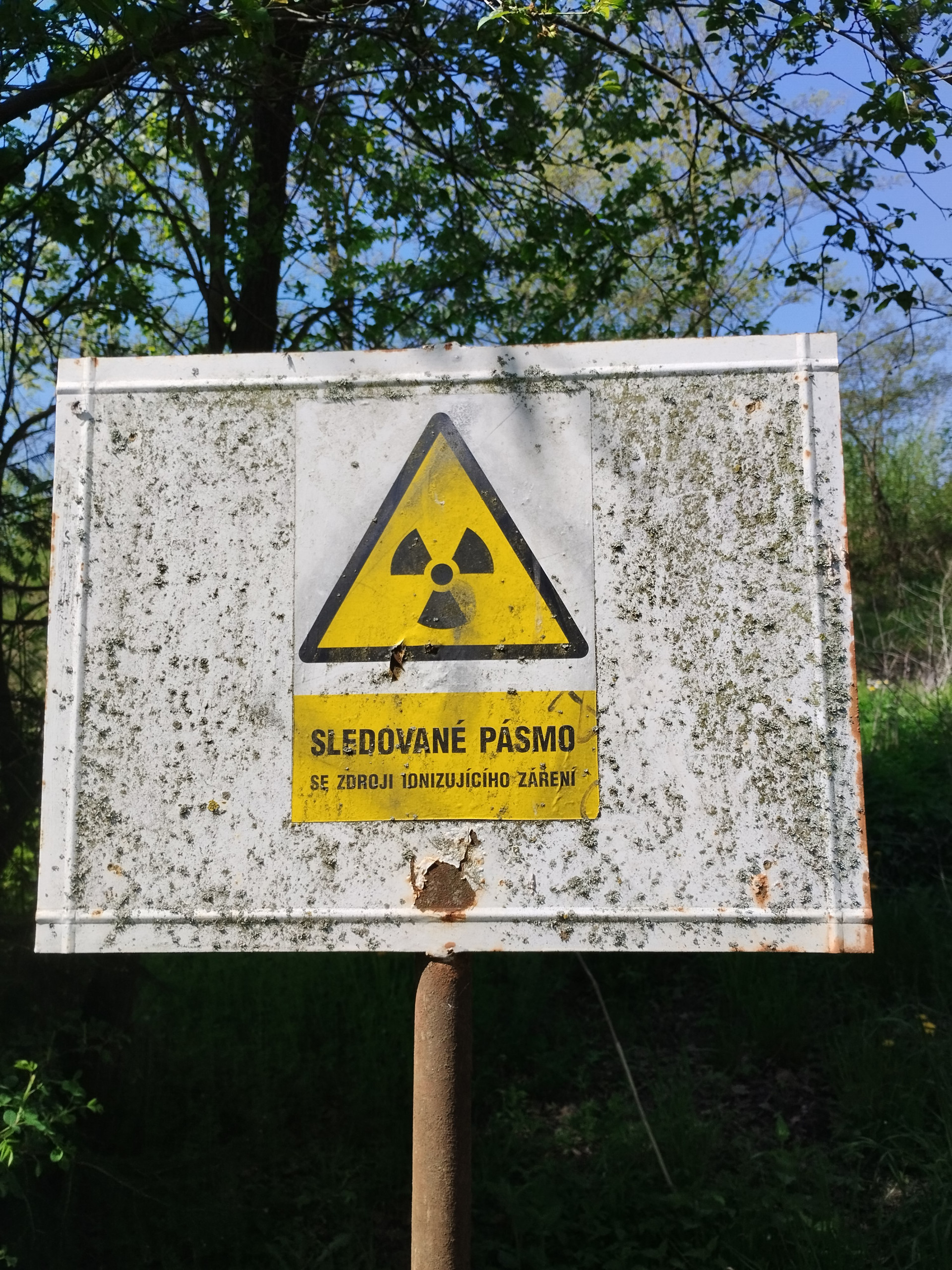
On a sunny day in April, chemist Jaroslav Švehla parks his car in front of a barrier. The 62-year-old has known the area since his childhood days. South Bohemia is his home, famous for its good beer and the carp ponds. Far less well known, however, are the contaminated ponds gaping like open wounds in the otherwise picturesque landscape. Švehla, who works for the National Institute of Public Health, has returned to show us this place. Along a concrete trench, rusted signs bearing the black and yellow radiation hazard symbol warn of increased radioactivity. Švehla continues undeterred, walking past massive iron pipes running across a dike, as a pumping station roars in the background. As he approaches the shoreline, where the car tyres and shoe soles bob in the water, Švehla laments: ‘Everything in this water dies.’
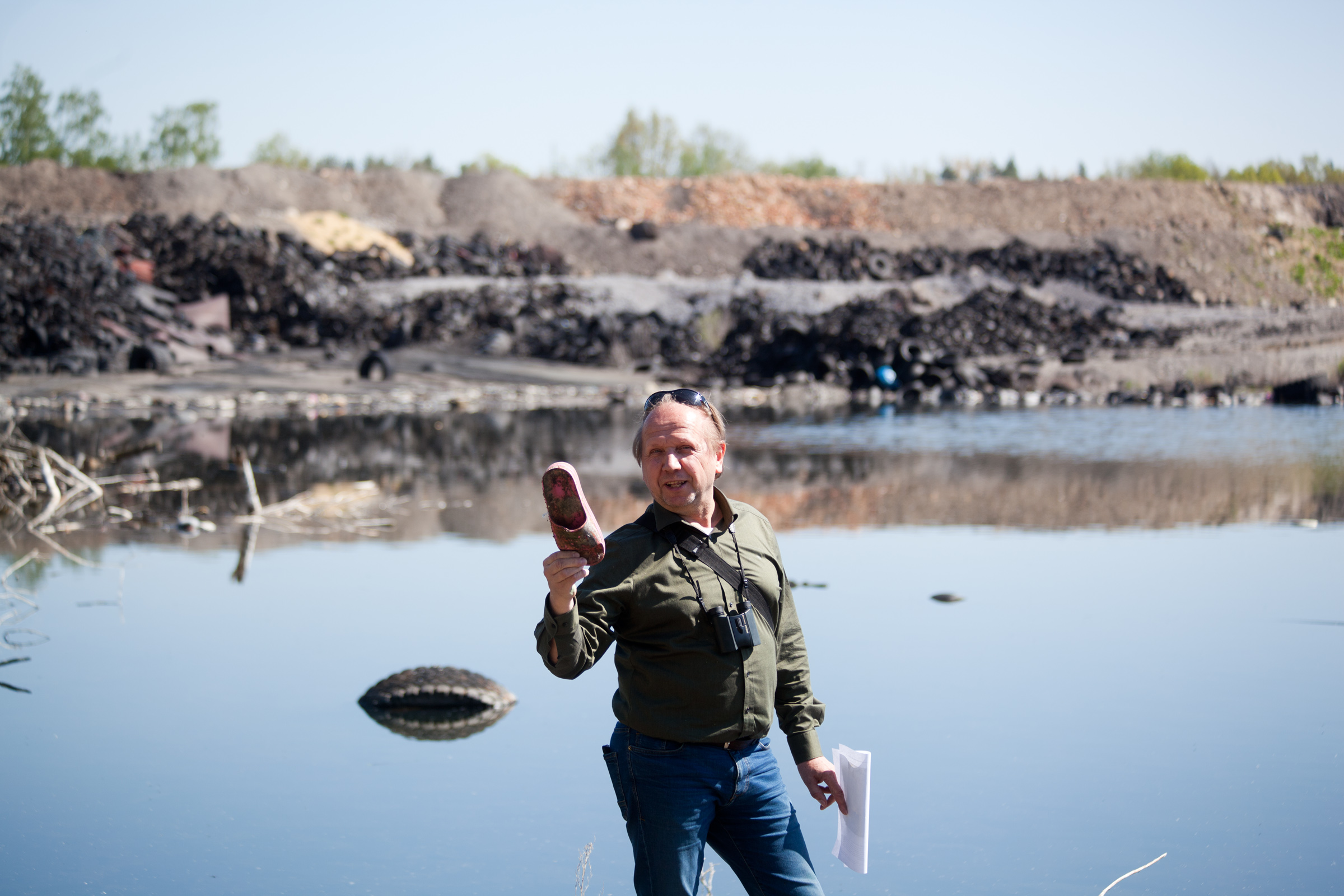
Back when the Czech Republic was still part of the former country Czechoslovakia, the site on the outskirts of the village Mydlovary, with its 300 inhabitants, was used to process uranium ore for the Soviet nuclear programme. Over decades, millions of tonnes of rock were delivered from uranium mines in other parts of the country.
Archival enquiries by CORRECTIV.Europe to the relevant mining authorities in Germany have now revealed that, even during the 1980s, uranium ore was delivered for processing in Mydlovary across the Iron Curtain from West Germany, with several thousand tonnes coming from a mine in the Black Forest and an exploratory mine in Bavaria.
In Mydlovary, uranium was extracted from the rock using alkalis and acids. This process left behind an estimated 36 million cubic metres of uranium sludge and wastewater, known in mining jargon as tailings. Old lignite mines, some up to 38 metres deep, were later flooded with these tailings, creating a contaminated pond landscape covering an area of 285 hectares, roughly equivalent to 400 football pitches.
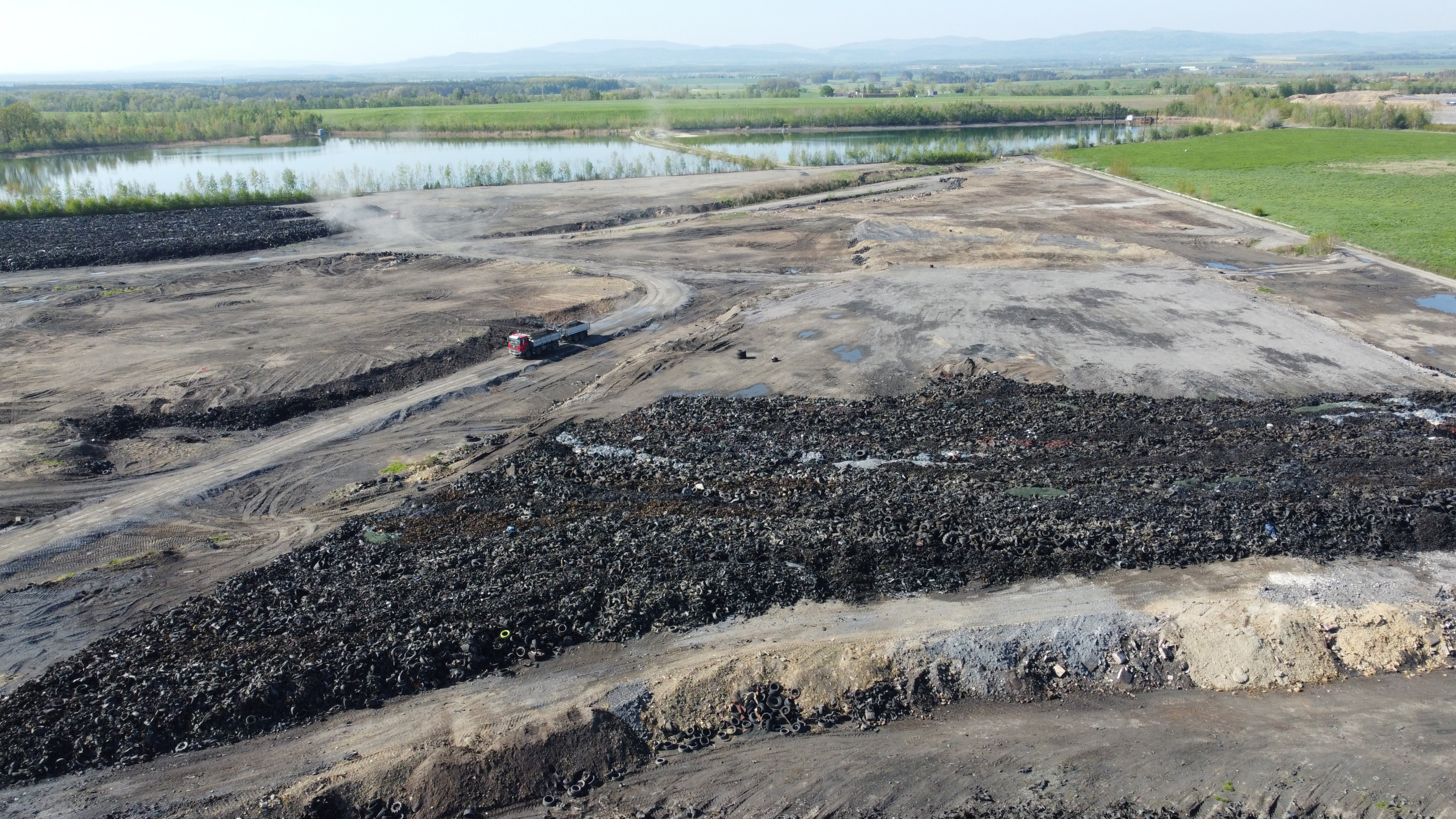
The complexity and expense involved in cleaning up such nuclear legacies are well known across Europe. The European Commission authorised a study that confirmed a total of 87 uranium tailings in 12 EU member states: Bulgaria, Czech Republic, Estonia, France, Germany, Hungary, Poland, Portugal, Romania, Slovenia, Spain and Sweden. ‘More than 40 objects have already been completely remediated’, the study states. ‘Some 20 others are currently being remediated, while for the remaining objects, remediation has yet to start.’
One such remediation project is taking place in Germany, where the federally owned company Wismut GmbH has been responsible for dealing with the radioactive legacy of the former GDR in the eastern part of the country. According to Wismut, the uranium sludge ponds in Germany are covered with waste from the past uranium mining operations and demolition materials from former industrial buildings. Asked by CORRECTIV.Europe to comment on other materials such as old tyres, a Wismut spokesperson emphasises that the use of such ‘non-mining residues’ is ‘not legally permitted’ in Germany. The mammoth remediation project of the former Wismut uranium mining and processing sites is expected to continue until about 2050 and to cost an estimated total of around nine billion euros in taxpayers’ money. According to Wismut, the cost of remediating the uranium sludge ponds will cost 1.2 billion euros alone.
In Mydlovary, a different method was chosen – at an estimated cost of 130 million euros, according to the Czech state-owned company Diamo. The company was commissioned to remediate the toxic wasteland of the former uranium ore processing plant – by covering it with other waste. From Diamo’s point of view, this is permissible because by dumping the waste into the contaminated holes, the waste becomes a material that is ‘used’ rather than ‘disposed of’. According to Diamo, the uranium sludge ponds in Mydlovary have been filled with around 13 million tonnes of waste so far.
A considerable portion of this waste has been brought in from abroad. Rubber waste from Italy is dumped there, as is Austrian steel mill slag contaminated with heavy metals. Diamo claims that it cannot comment on the amount of waste that has been shipped in from abroad over the years, as it does not have this information from the private companies responsible for receiving the imported waste.
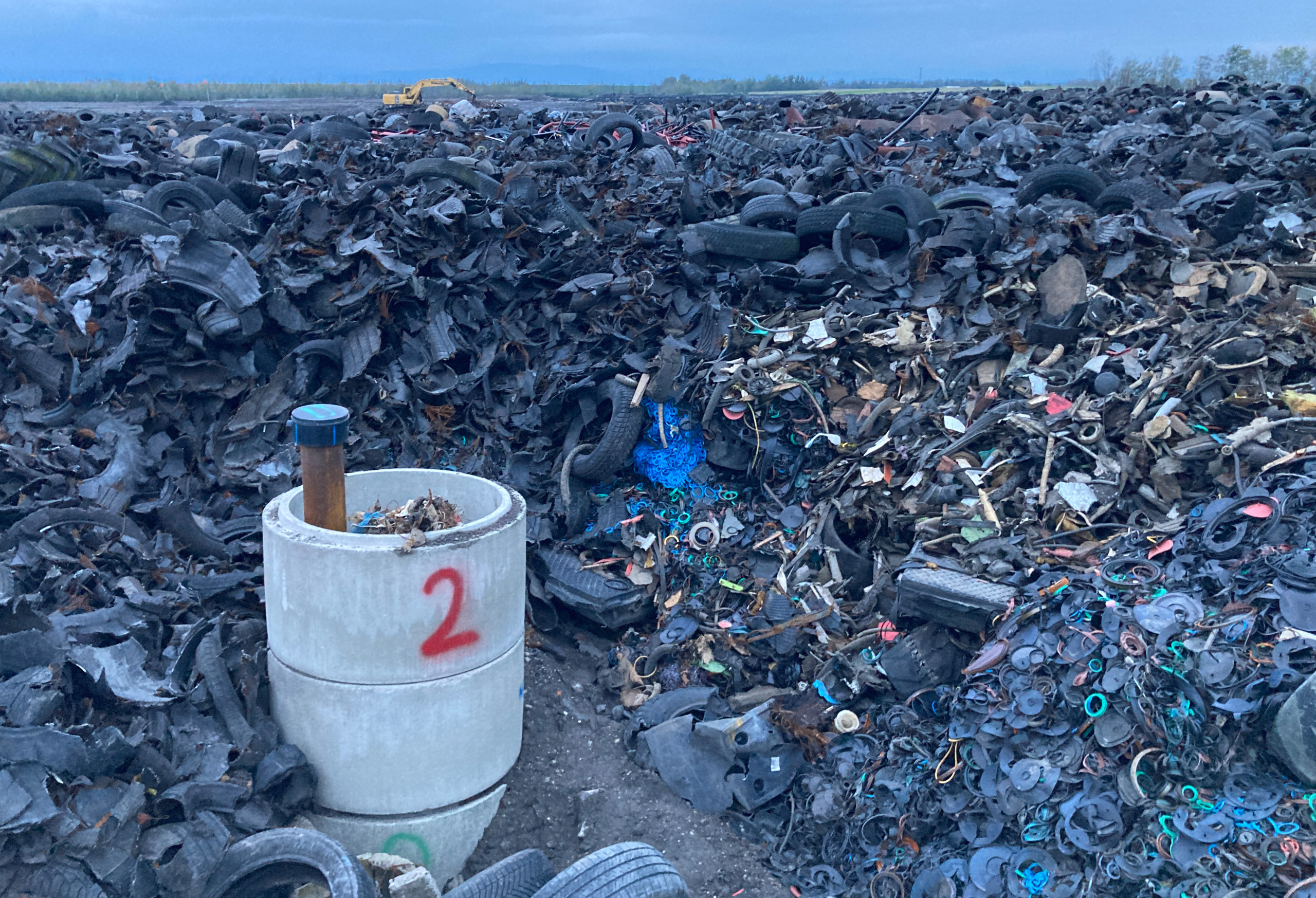
The waste industry has turned the nuclear legacy into a business model. Waste that is very expensive to dispose of in Germany, Austria and Italy is disposed of in Mydlovary at dumping prices. An example: A German garage wants to get rid of old tyres. It hands over the tyres to a waste disposal company, which charges up to 300 euros per tonne. To have the tyres legally utilised in Germany, the waste disposal company must pay others. Even burning the tyres, for example in the blast furnace of a cement factory, will cost the disposal company around 100 euros per tonne. In Mydlovary, on the other hand, tyres can be disposed of at a fraction of that cost, according to various players in the waste industry, thus increasing profit margins. One of the sources that CORRECTIV.Europe talked to says: by exporting waste to Mydlovary, ‘some people have made a fortune’.
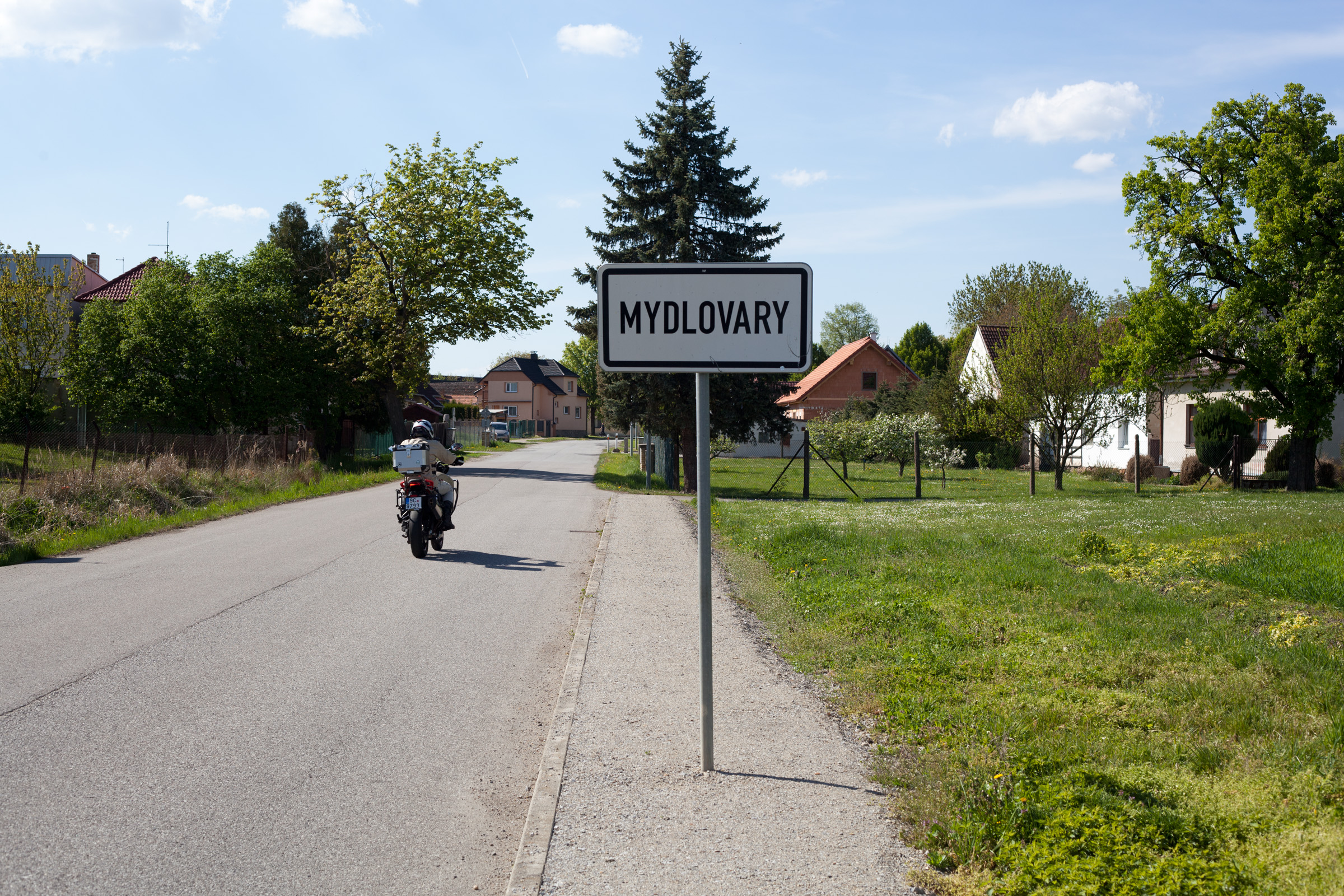
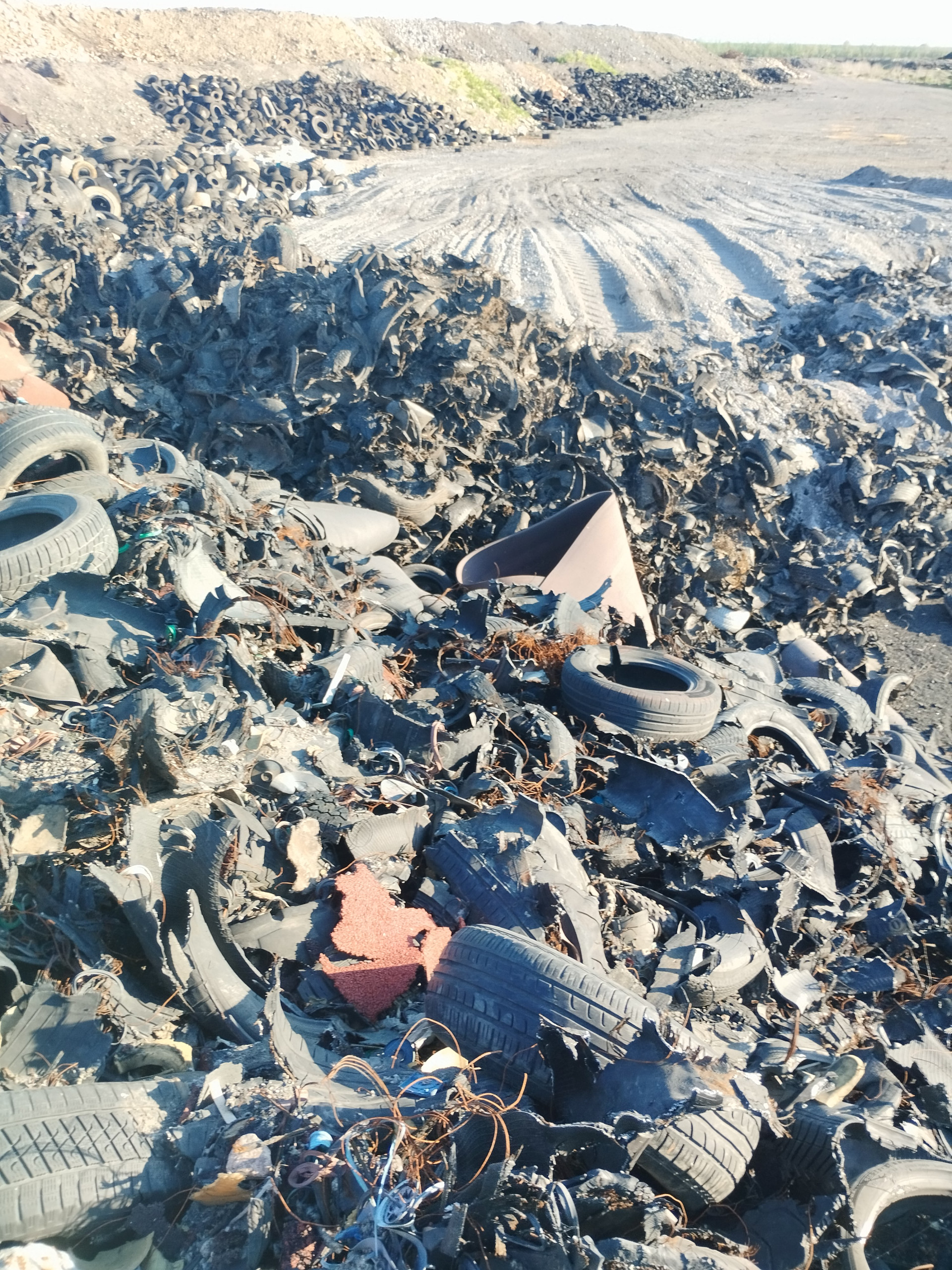
‘And this is considered an official remediation method,’ says Jaroslav Švehla, shaking his head as he regards the piles of waste in Mydlovary. When using the term remediation, Švehla mimes quotation marks in the air with his fingers. ‘Nobody knows exactly what has been dumped here,’ he says. The ponds have never been sealed at the bottom, he explains; only the clay-rich soil separates the sludge from the groundwater. Švehla fears that ‘within the foreseeable future’, the cocktail of toxic waste and uranium residues will seep into the surrounding drinking water wells. ‘It’s a ticking time bomb,’ he warns.
As early as 2004, Czech environmental protection organisation Arnika criticised that ash from incinerator plants was also being used to cover the uranium sludge ponds in Mydlovary. Such ash is highly toxic as it contains large amounts of dioxins and other pollutants. The mayor of Mydlovary at the time emphasised that ‘locals are afraid of another environmental burden. There are already enough toxins around us.’ In addition, the Czech chapter of Greenpeace stated: ‘Operators of Czech uranium tailing dams are often trying to secure additional sources of income by importing and dumping even more types of hazardous waste there.’
‘Utterly unsuitable’
The contaminated site in the Czech Republic even caught the attention of the German Federal Environment Agency (UBA). This was due to an estimated 100,000 tonnes of gypsum plasterboard from construction sites and building demolitions in Germany being disposed of in Mydlovary every year. The absorbent gypsum material was supposed to bind the uranium sludge there. In a 2017 study, however, the German agency concluded that gypsum was ‘utterly unsuitable from a physical/technical standpoint’ for stabilising the uranium sludge ponds. In fact, it even posed a health hazard: when gypsum is mixed with other substances, a chemical reaction can occur which produces hydrogen sulphide – a gas that, the Germans warned, ‘causes odour nuisance in low concentrations, but is lethal in high concentrations.’ A few years ago, residents of Mydlovary and other surrounding villages repeatedly complained about a rotten egg stench wafting from the sludge ponds into their homes.
Confronted by CORRECTIV.Europe, the state-owned company Diamo confirmed the problems in Mydlovary in connection with the imported gypsum and stated that it has since ceased imports of the material. We would have liked Diamo to show us the remediation work themselves. However, the press office declined our requests both for an interview and an official tour of the facility.
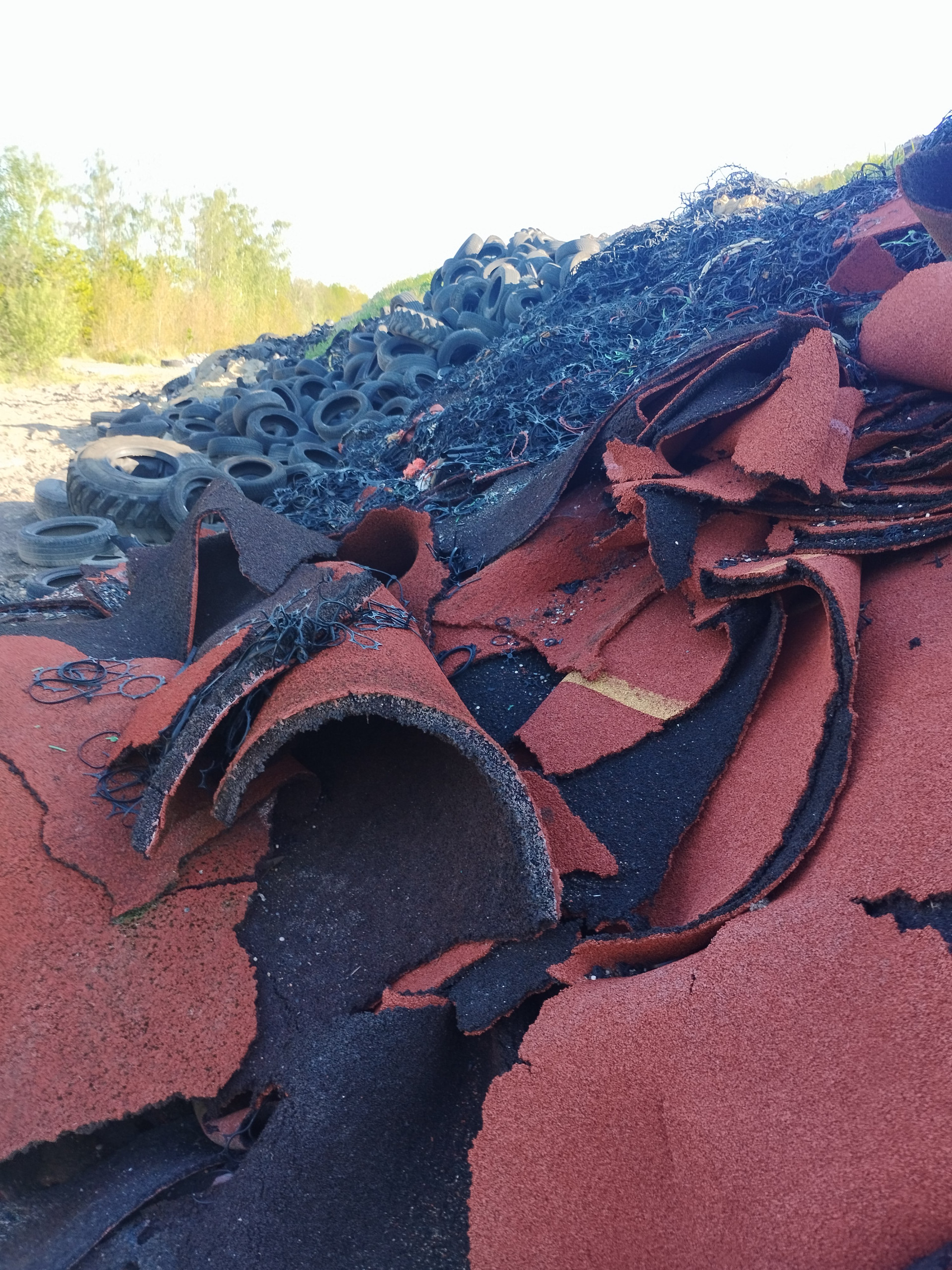
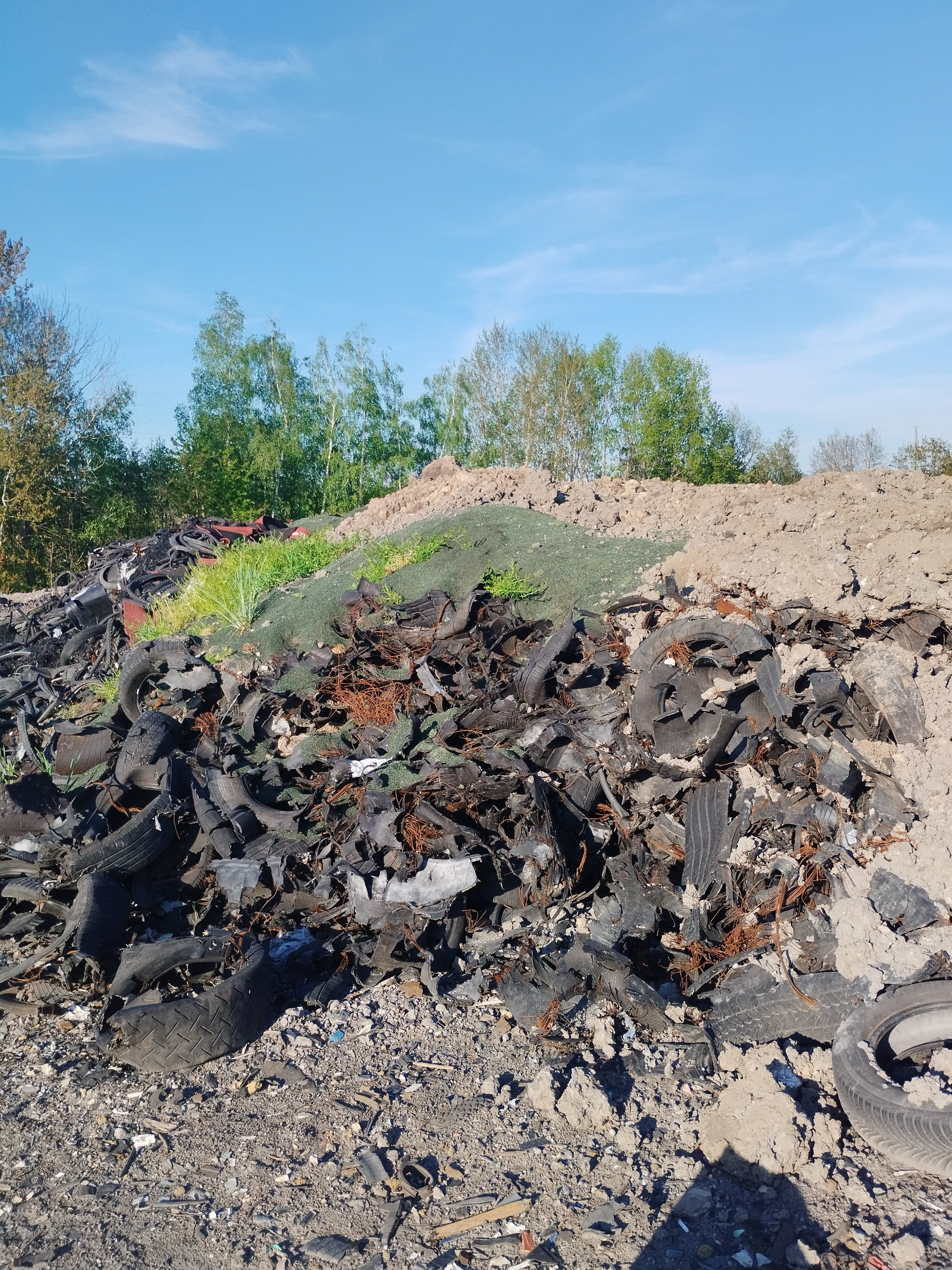
As we walked over the piles of waste in Mydlovary, we found countless old tyres, tubes and other car parts, as well as thick lumps of melted rubber, fragments of tartan from sports fields and remnants of artificial turf in some corners.
Had this waste been traded on the freight exchange platform we were able to access?
Among the companies whose transport tenders we were able to document on the platform, there is at least one German company specialising in recycling artificial turf. This company was involved in dismantling the artificial turf that had been laid out on Berlin’s fan mile during last year’s European Football Championship. Upon enquiry by CORRECTIV.Europe, the company confirmed that it does organise waste shipments to Mydlovary. However, parts of the artificial turf from Berlin were ‘definitely’ not among these, the company claims.
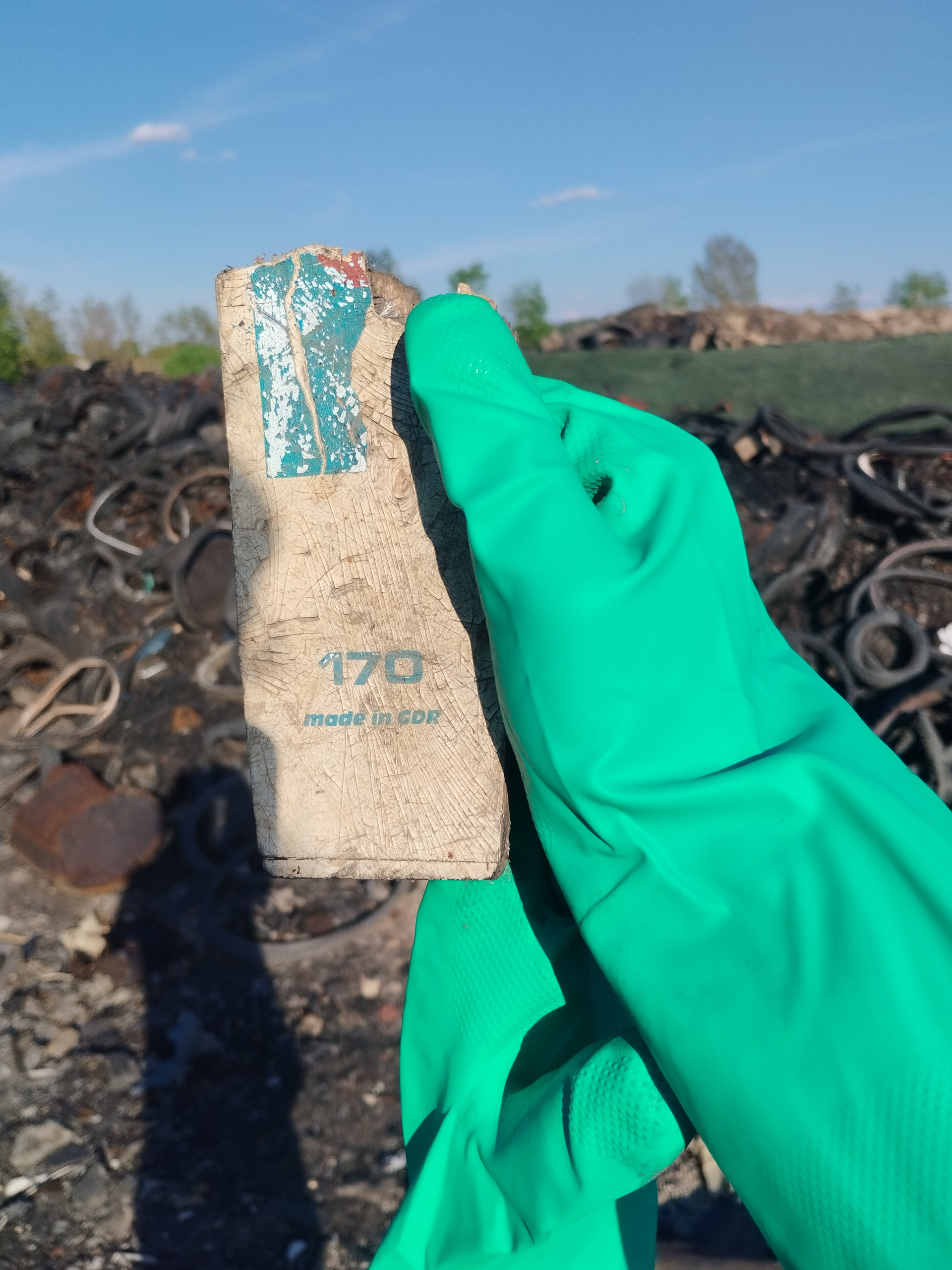
The shipments advertised on the freight exchange platform are likely just the tip of the waste pile. A single waste disposal company from the German federal state of Saxony-Anhalt exported around 5,600 tonnes of rubber waste to Mydlovary in 2022 alone, according to information provided by the responsible state authority. The buyer was a Czech company that fills the ponds in Mydlovary on behalf of Diamo.
In most cases, however, the German environmental inspectors do not even know how much waste is being exported. The German Federal Environmental Agency explained to CORRECTIV.Europe, ‘Neither plasterboard from building demolitions nor old tyres are subject to special waste monitoring. As such, no data concerning cross-border shipment quantities are available.’
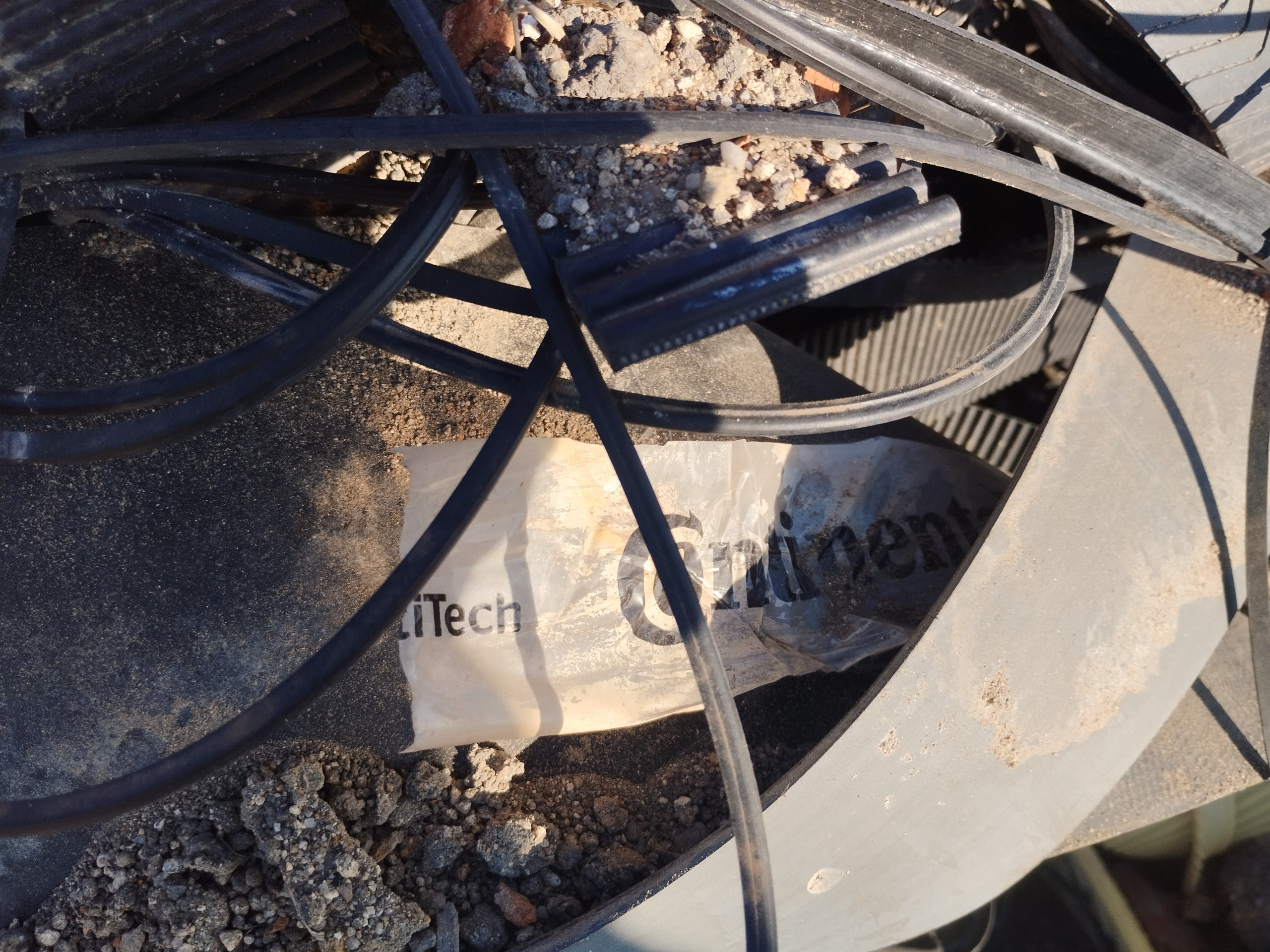
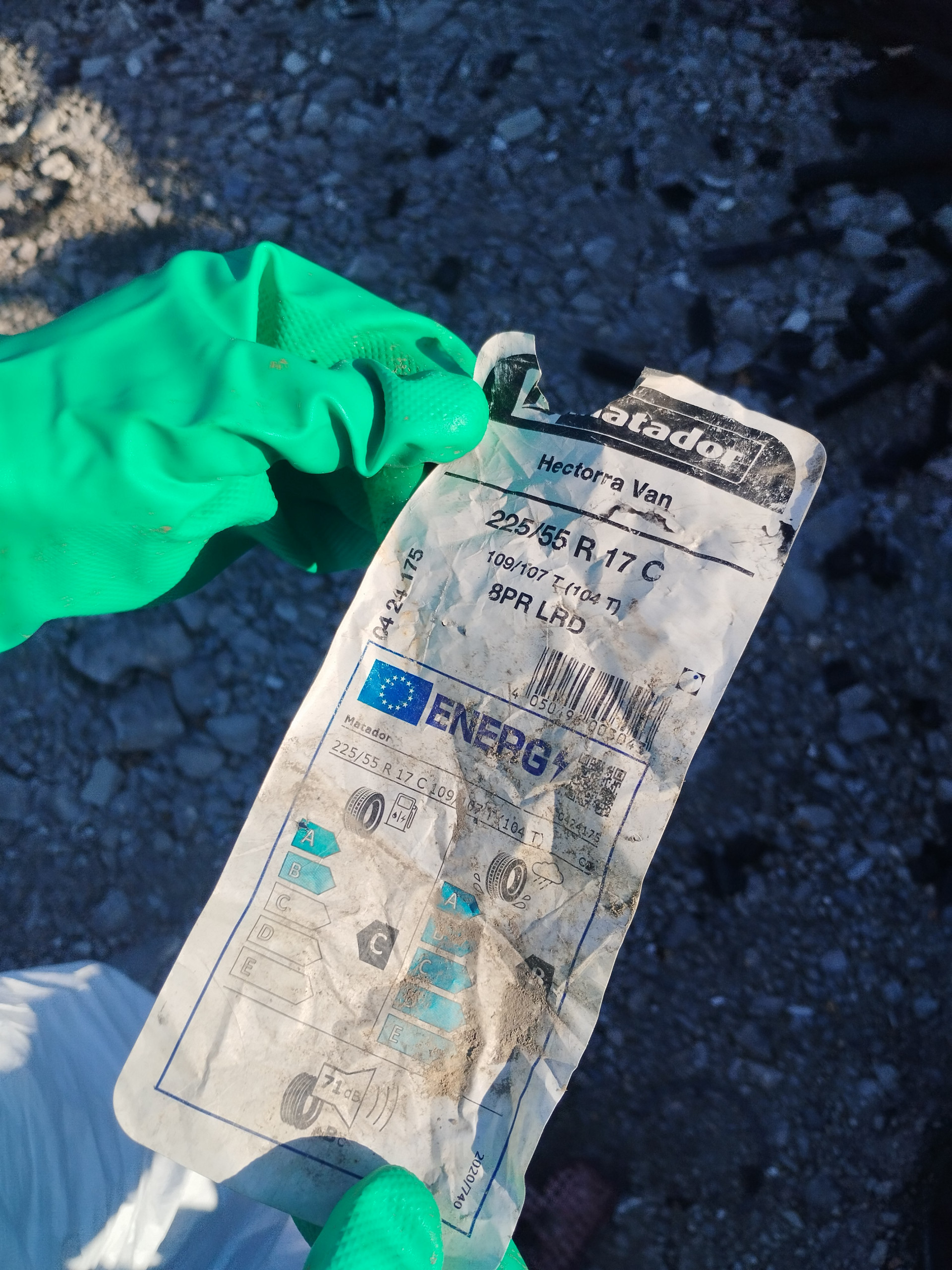
Some companies seem to have reservations about the practices in Mydlovary. For example, since 2020, Continental – Europe’s biggest tyre manufacturer – has ‘explicitly instructed’ its business partners not to dispose of the company’s production waste in Mydlovary. According to a press spokesperson, Continental considers the remediation project in Mydlovary to be ‘landfill-like dumping ground’. For this reason, the company does not want its waste to end up there. Continental adheres to ‘a commitment to consistently implement the waste hierarchy of the German Waste Management and Product Recycling Act – with a clear priority for prevention, reutilisation and high-quality recycling over disposal,’ the company’s spokesperson told CORRECTIV.Europe. According to Continental, the Mydlovary route does not meet these requirements.
Nevertheless, amongst the mountains of waste in Mydlovary, we found waste bearing the Continental logo, as well as a product sheet from Matador, a Continental-owned tyre brand. As a manufacturer, Continental has ‘no direct control over the disposal channels for used tyres or other materials put into circulation via external workshops, tyre dealers or collection systems,’ the company spokesperson explains, adding that Continental takes ‘such reports very seriously’ and has ‘launched an internal investigation’.
One German authority agrees with Continental’s assessment: the Bavarian State Office for the Environment (LfU) has classified the way that used tyres are utilised in Mydlovary as disposal, which equates to landfill dumping – the last stage in the European waste hierarchy and illegal under German law. However, the LfU appears powerless to act against these questionable exports, since other authorities are responsible for monitoring cross-border waste transactions. In Bavaria, for example, the administrative districts are in charge. On the Czech side, authorities such as the Ministry of the Environment and the Environmental Inspectorate are responsible. And yet the waste shipments continue.
As of September 2025, waste from abroad is still being transported in, with old tyres and other rubber waste being dumped into the uranium sludge ponds of Mydlovary. For now, at least: by next year, the last uranium sludge pond in Mydlovary is scheduled to be filled up, according to the operator company Diamo. After more than twenty years and millions of tonnes of waste, grass will soon be grown over this almost-forgotten legacy of the nuclear industry that scientist Jaroslav Švehla calls a ticking time bomb. Meanwhile, the masses of waste disposed of in Mydlovary to date will continue to accumulate in Germany, Austria and Italy. To get rid of it, the waste dealers will have to find a new hole.
